Pork Beef Chicken or Bison Liver Nutritional Comparisons
Last Updated on May 20, 2022 by
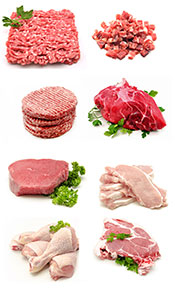
There are many different types of meat, and they can be surprisingly different in their nutritional properties.
Generally speaking, meat offers an excellent source of protein and provides a good range of essential nutrients. In this regard, it tends to be a better source of B vitamins than most other types of food.
This article reviews the nutritional profile and potential pros and cons of twelve common varieties of meat.
1. Pork
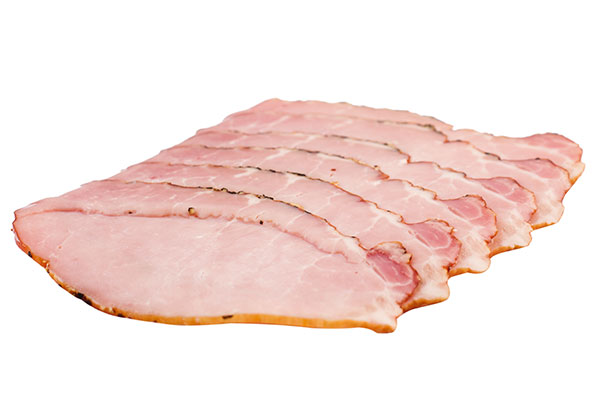
Pork is one of the most popular forms of meat in the world.
Despite some confusion on the issue, pork is classed as red meat rather than white. This is because it contains a large amount of myoglobin, a protein responsible for the red color of meat.
In fact, there are so many different cuts of pork, and a variety of meat products use it such as;
- Bacon
- Ham
- Hot dogs
- Jamon
- Prosciutto
- Salami
- Sausages
Nutrition Facts
Based on data provided by the USDA FoodCentral Database, here is the typical nutritional profile for ground pork meat per 100g (1).
(Note: Different cuts of meat will vary in their nutrient content, but this provides a general idea of each meat, and the cuts are as close a match as possible.)
| Nutrient | Amount |
| Calories | 263 kcal |
| Carbohydrate | 0 g |
| Protein | 16.9 g |
| Fat | 21 g |
| – Saturated | 7.9 g |
| – Monounsaturated | 9.4 g |
| – Polyunsaturated | 1.9 g |
| – Omega-3 | 70 mg |
| – Omega-6 | 1670 mg |
| Omega 6 to 3 Ratio | 23.8 : 1 |
| Vitamin A | 0 |
| Vitamin C | 1% DV |
| Vitamin D | – |
| Vitamin E | – |
| Vitamin K | – |
| Thiamin | 49% DV |
| Riboflavin | 14% DV |
| Niacin | 22% DV |
| Vitamin B6 | 19% DV |
| Folate | 1% DV |
| Vitamin B12 | 12% DV |
| Pantothenic Acid | 7% DV |
| Calcium | 1% DV |
| Iron | 5% DV |
| Magnesium | 5% DV |
| Phosphorus | 18% DV |
| Potassium | 8% DV |
| Sodium | 2% DV |
| Zinc | 15% DV |
| Copper | 2% DV |
| Manganese | 1% DV |
| Selenium | 35% DV |
Benefits
- Pork is a particularly significant source of thiamin (vitamin B1). The content of this important vitamin is much higher than in other meat and plays an essential role in glucose metabolism and protecting cardiac health (2, 3).
- Much cheaper than most other meats.
- Pork contains decent amounts of selenium and zinc, which are responsible for boosting the immune system, defending against oxidative stress, and optimal hormone production (4, 5).
Concerns
- Pork is more susceptible to bacterial contamination and food-borne illnesses than other meat; ensuring pork is thoroughly cooked is essential (6, 7).
2. Beef
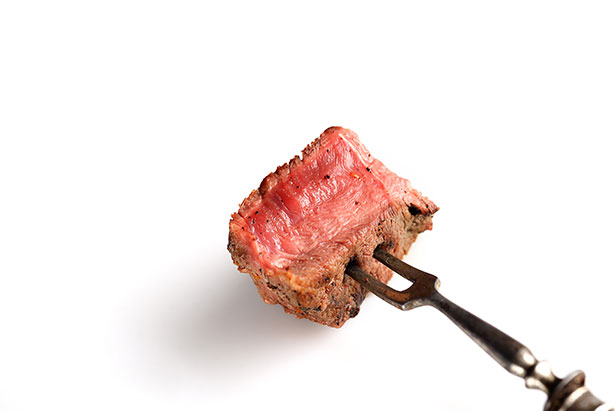
When most people think of red meat, they probably imagine beef.
There are many different beef products and cuts of beef, ranging from hamburgers to ribeye steaks.
Nutrition Facts
Here are the nutrient values for ground beef per 100 grams (8).
| Nutrient | Amount |
| Calories | 254 kcal |
| Carbohydrate | 0 g |
| Protein | 17.2 g |
| Fat | 20 g |
| – Saturated | 7.7 g |
| – Monounsaturated | 8.8 g |
| – Polyunsaturated | 0.5 g |
| – Omega-3 | 48 mg |
| – Omega-6 | 435 mg |
| Omega 6 to 3 Ratio | 9 : 1 |
| Vitamin A | 0% DV |
| Vitamin C | 0% DV |
| Vitamin D | – |
| Vitamin E | 2% |
| Vitamin K | 2% |
| Thiamin | 3% DV |
| Riboflavin | 9% DV |
| Niacin | 21% DV |
| Vitamin B6 | 16% DV |
| Folate | 2% DV |
| Vitamin B12 | 36% DV |
| Pantothenic Acid | 5% DV |
| Calcium | 2% DV |
| Iron | 11% DV |
| Magnesium | 4% DV |
| Phosphorus | 16% DV |
| Potassium | 8% DV |
| Sodium | 3% DV |
| Zinc | 28% DV |
| Copper | 3% DV |
| Manganese | 1% DV |
| Selenium | 21% DV |
It is also important to note that the nutritional properties of beef can vary considerably depending on the fat content.
For example, a ribeye steak will be much higher in fat (and calories) than a lean cut of meat.
To gain a better idea of how different cuts of beef compare, see this guide to steak varieties and their nutrient profiles.
Benefits
- Beef contributes large amounts of iron, zinc, and vitamin B12 to the average person's diet (9).
- Interestingly, the main fatty acid in beef is none other than oleic acid. If you haven't heard of it before, then it's also the main fat in olive oil (and known as "heart healthy") (10, 11).
- Beef contains a wide variety of potentially beneficial compounds that include creatine, conjugated linoleic acid (CLA), and glutathione (12, 13, 14).
Concerns
- Excessive beef consumption can increase circulating iron to unhealthy levels in some individuals. These high levels can increase the risk of various cancers and cardiovascular disease. This risk is especially the case in those with a genetic mutation called hemochromatosis, which causes over-absorption of heme iron (15, 16).
- Overcooking beef (burning) can lead to the formation of polycyclic aromatic hydrocarbons (PAHs) and heterocyclic amines (HCAs). Both of these compounds are carcinogens, but we can minimize their risks by sensibly cooking meat (17, 18).
See this full guide to beef's benefits for more information.
3. Lamb and Mutton
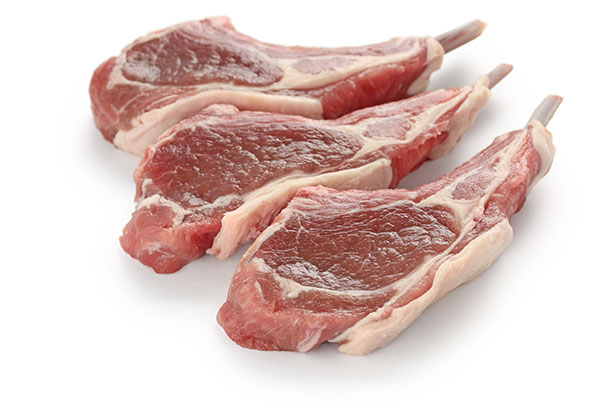
Both lamb and mutton are very similar types of meat, with one fundamental difference;
- Lamb is from a sheep less than one-year-old
- Mutton is the meat of an adult sheep
Just like beef and pork, there are a variety of popular lamb cuts — perhaps lamb chops are the most popular.
Nutrition Facts
Per 100g, the nutritional profile of ground lamb meat looks something like this (19);
| Nutrient | Amount |
| Calories | 282 kcal |
| Carbohydrate | 0 g |
| Protein | 16.6 g |
| Fat | 23.4 g |
| – Saturated | 10.2 g |
| – Monounsaturated | 9.6 g |
| – Polyunsaturated | 1.9 g |
| – Omega-3 | 420 mg |
| – Omega-6 | 1360 mg |
| Omega 6 to 3 Ratio | 3.2 : 1 |
| Vitamin A | 0% DV |
| Vitamin C | 0% DV |
| Vitamin D | – |
| Vitamin E | 1% DV |
| Vitamin K | 4% DV |
| Thiamin | 7% DV |
| Riboflavin | 12% DV |
| Niacin | 30% DV |
| Vitamin B6 | 6% DV |
| Folate | 5% DV |
| Vitamin B12 | 39% DV |
| Pantothenic Acid | 7% DV |
| Calcium | 2% DV |
| Iron | 9% DV |
| Magnesium | 5% DV |
| Phosphorus | 16% DV |
| Potassium | 6% DV |
| Sodium | 2% DV |
| Zinc | 23% DV |
| Copper | 5% DV |
| Manganese | 1% DV |
| Selenium | 27% DV |
Benefits
Generally speaking, both lamb and mutton are nutritious meat options.
- Because sheep graze on pasture all day, the omega 6 to 3 ratio is very low—and perhaps optimal—compared to other meats (20).
- Lamb contains a broad range of health-protective nutrients, especially zinc, selenium and B vitamins.
Concerns
- Lamb is very expensive in comparison to other kinds of meat.
4. Chicken
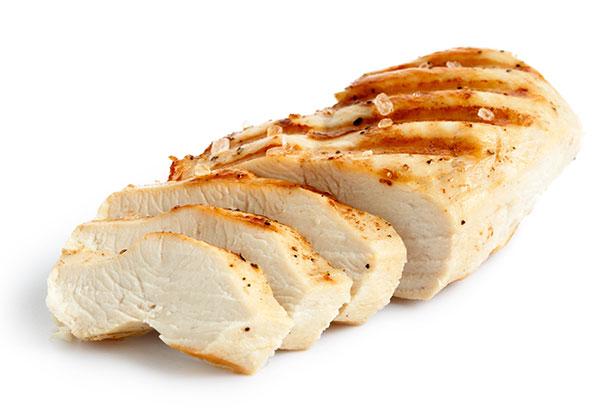
Alongside beef and pork, chicken is one of the 'big three' popularity-wise.
However, chicken is a different classification of meat and comes under the poultry category.
People commonly refer to poultry as 'white meat'.
As one of the most popular foods in the world, there are all sorts of chicken-based foods. These range from fried and roasted chicken to chicken soup and even chicken popcorn.
Nutrition Facts
Ground chicken meat provides the following nutrients per 100g (21);
| Nutrient | Amount |
| Calories | 143 kcal |
| Carbohydrate | 0 g |
| Protein | 17.4 g |
| Fat | 8.1 g |
| – Saturated | 2.3 g |
| – Monounsaturated | 3.6 g |
| – Polyunsaturated | 1.5 g |
| – Omega-3 | 96 mg |
| – Omega-6 | 1327 mg |
| Omega 6 to 3 Ratio | 13.8 : 1 |
| Vitamin A | 0% DV |
| Vitamin C | 0% DV |
| Vitamin D | – |
| Vitamin E | 1% DV |
| Vitamin K | 1% DV |
| Thiamin | 7% DV |
| Riboflavin | 14% DV |
| Niacin | 22% DV |
| Vitamin B6 | 19% DV |
| Folate | 1% DV |
| Vitamin B12 | 14% DV |
| Pantothenic Acid | 11% DV |
| Calcium | 1% DV |
| Iron | 5% DV |
| Magnesium | 5% DV |
| Phosphorus | 18% DV |
| Potassium | 15% DV |
| Sodium | 3% DV |
| Zinc | 10% DV |
| Copper | 3% DV |
| Manganese | 1% DV |
| Selenium | 15% DV |
Benefits
- Chicken is very cheap and affordable.
- For those who are trying to consume less fat/calories, chicken offers a smaller amount than other meats but with the same protein content. In other words, chicken is protein-dense.
- Chicken stock/broth offers a significant source of gelatin. As chicken bones have a lower density than other meats, the collagen and gelatin are far easier to extract.
- Chicken provides a decent source of necessary vitamins and minerals, particularly selenium, potassium, phosphorus and B vitamins.
Concerns
- Unfortunately, bacterial contamination with strains such as E. coli and salmonella isn't rare with chicken. As a result, strict hygiene procedures are necessary when handling raw meat (22, 23).
See this guide to the nutrition profile and potential benefits of chicken for more information.
5. Turkey
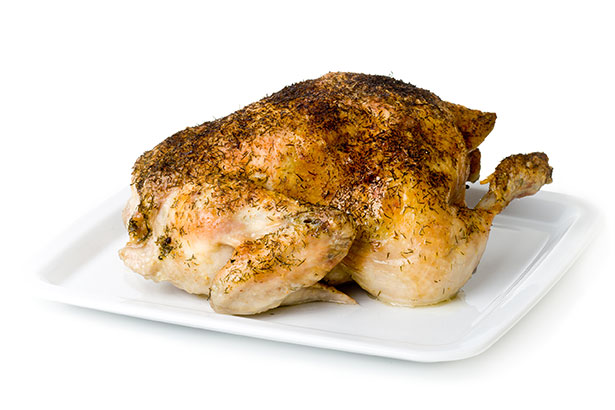
Turkey is another type of white meat, probably best known for its appearance at the Christmas table.
It has both a deeper yet drier taste than chicken and is a less prevalent form of poultry.
As mentioned above, the most popular kind is probably roast turkey, but you can find a variety of processed and unprocessed turkey products. One of the most popular of these is turkey bacon (see here for a full guide to turkey bacon).
Nutrition Facts
Turkey's nutritional composition is very similar to chicken and looks like this (24);
| Nutrient | Amount |
| Calories | 149 kcal |
| Carbohydrate | 0 g |
| Protein | 17.5 g |
| Fat | 8.3 g |
| – Saturated | 2.3 g |
| – Monounsaturated | 3.1 g |
| – Polyunsaturated | 2.0 g |
| – Omega-3 | 110 mg |
| – Omega-6 | 1800 mg |
| Omega 6 to 3 Ratio | 16.3 : 1 |
| Vitamin A | 0% DV |
| Vitamin C | 0% DV |
| Vitamin D | – |
| Vitamin E | 2% DV |
| Vitamin K | 1% DV |
| Thiamin | 4% DV |
| Riboflavin | 8% DV |
| Niacin | 17% DV |
| Vitamin B6 | 18% DV |
| Folate | 2% DV |
| Vitamin B12 | 6% DV |
| Pantothenic Acid | 7% DV |
| Calcium | 1% DV |
| Iron | 7% DV |
| Magnesium | 5% DV |
| Phosphorus | 16% DV |
| Potassium | 7% DV |
| Sodium | 4% DV |
| Zinc | 13% DV |
| Copper | 4% DV |
| Manganese | 1% DV |
| Selenium | 27% DV |
Benefits
- Turkey is among the most protein-dense of all meats, offering 17.5 grams of protein for only 149 calories.
- Similar to chicken, turkey also provides a significant amount of B vitamins, potassium, selenium and phosphorus.
- Turkey provides an inexpensive source of high-quality protein.
Concerns
- Similar to other forms of poultry, turkey is more likely to harbor foodborne bacteria than red meat (25).
6. Venison
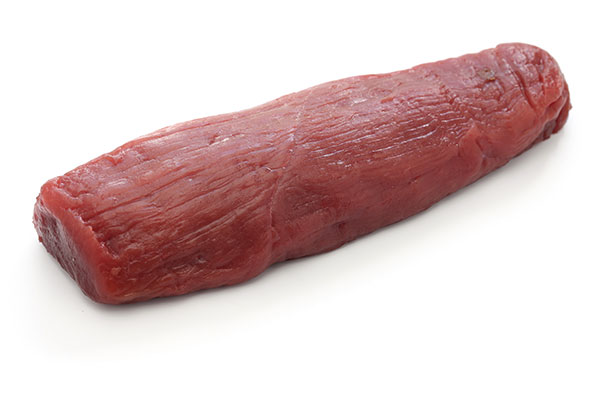
Venison refers to the flesh of a deer, and it is a traditionally rarer type of meat.
In recent years, sales of venison have been soaring as a result of its perceived healthy reputation among consumers.
But is that reputation justified?
Nutrition Facts
Despite being a red meat, venison is very lean. In terms of nutrition, it looks more like white meat.
Here are the nutritional details per 100g of ground venison (26);
| Nutrient | Amount |
| Calories | 157 kcal |
| Carbohydrate | 0 g |
| Protein | 21.8 g |
| Fat | 7.1 g |
| – Saturated | 3.4 g |
| – Monounsaturated | 1.3 g |
| – Polyunsaturated | 0.4 g |
| – Omega-3 | 104 mg |
| – Omega-6 | 225 mg |
| Omega 6 to 3 Ratio | 2 : 1 |
| Vitamin A | 0% DV |
| Vitamin C | 0% DV |
| Vitamin D | – |
| Vitamin E | 2% DV |
| Vitamin K | 1% DV |
| Thiamin | 36% DV |
| Riboflavin | 17% DV |
| Niacin | 28% DV |
| Vitamin B6 | 23% DV |
| Folate | 1% DV |
| Vitamin B12 | 31% DV |
| Pantothenic Acid | 7% DV |
| Calcium | 1% DV |
| Iron | 16% DV |
| Magnesium | 5% DV |
| Phosphorus | 20% DV |
| Potassium | 9% DV |
| Sodium | 3% DV |
| Zinc | 28% DV |
| Copper | 7% DV |
| Manganese | 1% DV |
| Selenium | 14% DV |
Benefits
- As deer mostly live and feed in the wild, venison has a much lower fat (and omega-6 to omega-3 ratio) than other meat. The excellent omega 6 to 3 ratio stands at approximately 2:1.
- Venison hasmore vitamins and minerals than beef despite having significantly fewer calories. In short, venison is possibly the most nutrient-dense meat out there.
Concerns
- One obstacle could be the price; venison costs a lot. Expect to pay around $30 for one pound of venison steak.
- Source is extremely important. In some areas, deer can be infected with chronic wasting disease (CWD). See this full guide to venison meat for more information.
7. Duck
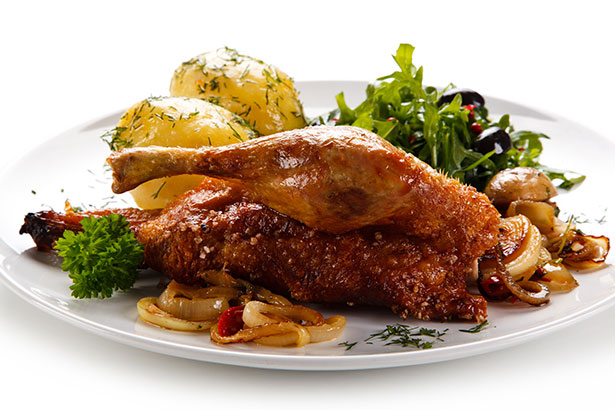
Duck is one of the less popular types of meat.
However, it has immense popularity in Chinese populations, where 'Peking duck' is a showpiece dish.
Like chicken and turkey, we can consider duck as a kind of white meat.
Nutrition Facts
Typical duck meat provides the following nutrients (27);
| Nutrient | Amount |
| Calories | 132 kcal |
| Carbohydrate | 0 g |
| Protein | 18.3 g |
| Fat | 5.9 g |
| – Saturated | 2.3 g |
| – Monounsaturated | 1.5 g |
| – Polyunsaturated | 0.7 g |
| – Omega-3 | 80 mg |
| – Omega-6 | 670 mg |
| Omega 6 to 3 Ratio | 8.4 : 1 |
| Vitamin A | 2% DV |
| Vitamin C | 10% DV |
| Vitamin D | – |
| Vitamin E | 4% DV |
| Vitamin K | 3% DV |
| Thiamin | 24% DV |
| Riboflavin | 0.5% DV |
| Niacin | 5.3% DV |
| Vitamin B6 | 17% DV |
| Folate | 6% DV |
| Vitamin B12 | 7% DV |
| Pantothenic Acid | 16% DV |
| Calcium | 1% DV |
| Iron | 13% DV |
| Magnesium | 5% DV |
| Phosphorus | 20% DV |
| Potassium | 8% DV |
| Sodium | 3% DV |
| Zinc | 13% DV |
| Copper | 13% DV |
| Manganese | 1% DV |
| Selenium | 20% DV |
Benefits
- Duck provides a significant amount of selenium, phosphorus, and B vitamins. These vitamins are all important for optimal energy production and a well-functioning immune system (28, 29).
Concerns
- Making duck at home—or having a roast duck—is perfectly healthy. However, be aware that in Chinese cuisine, duck often comes in sauces made from a variety of additives including sugars and oils.
8. Wild Boar
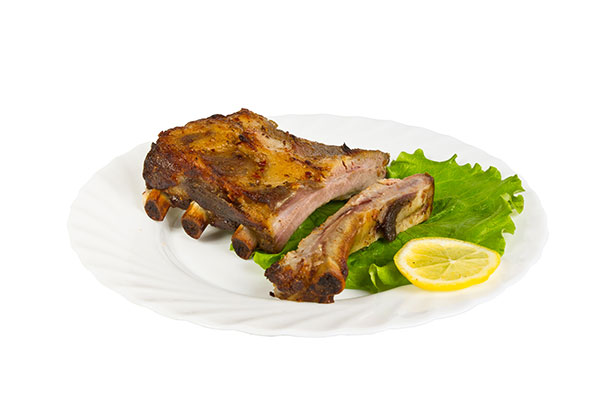
Wild boar is a non-domesticated pig that lives in the wild.
The meat of this animal is also known as 'wild boar.'
Generally speaking, wild boar contains a higher proportion of protein and a smaller amount of fat than regular pork.
Nutrition Facts
Wild boar has very different nutritional values from domestic pork, and per 100 g it looks like this (30);
| Nutrient | Amount |
| Calories | 160 kcal |
| Carbohydrate | 0 g |
| Protein | 28.3 g |
| Fat | 4.4 g |
| – Saturated | 1.3 g |
| – Monounsaturated | 1.7 g |
| – Polyunsaturated | 0.6 g |
| – Omega-3 | 30 mg |
| – Omega-6 | 500 mg |
| Omega 6 to 3 Ratio | 16.7 : 1 |
| Vitamin A | 0% DV |
| Vitamin C | 0% DV |
| Vitamin D | – |
| Vitamin E | – |
| Vitamin K | 2% DV |
| Thiamin | 21% DV |
| Riboflavin | 8% DV |
| Niacin | 21% DV |
| Vitamin B6 | 21% DV |
| Folate | 1% DV |
| Vitamin B12 | 12% DV |
| Pantothenic Acid | 0% DV |
| Calcium | 2% DV |
| Iron | 6% DV |
| Magnesium | 7% DV |
| Phosphorus | 13% DV |
| Potassium | 11% DV |
| Sodium | 3% DV |
| Zinc | 20% DV |
| Copper | 3% DV |
| Manganese | 0% DV |
| Selenium | 19% DV |
Benefits
- As it lives and feeds in its natural environment, wild boar contains a higher proportion of omega-3 fatty acids than purely grain-fed pigs.
- Wild boar contains an array of health-protective nutrients, in particularly B vitamins, selenium, and zinc.
Concerns
- Trichinella spiralis, a parasite sometimes found in pigs, occasionally contaminates wild boar meat. There have been several outbreaks of this in recent years, but it is quite rare (31, 32, 33).
9. Bison
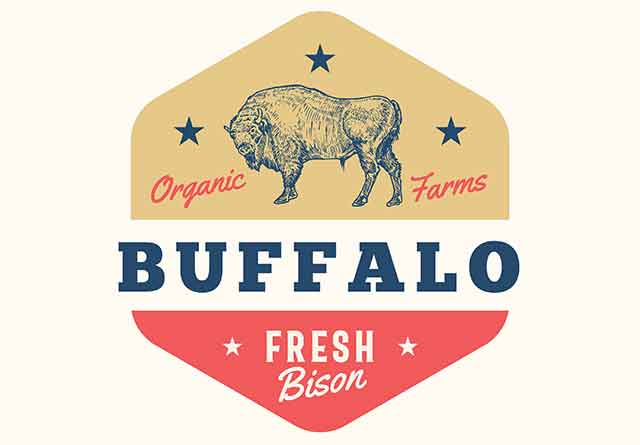
Bison is a type of red meat that is nutritious and very lean.
For this reason, it is an excellent choice of meat for anyone looking to keep their fat or calorie intake a little lower.
Nutrition Facts
Bison is quite nutrient-dense and offers the following nutrition profile per 100 grams (34);
| Nutrient | Amount |
| Calories | 146 kcal |
| Carbohydrate | 0 g |
| Protein | 20.2 g |
| Fat | 7.2 g |
| – Saturated | 2.9 g |
| – Monounsaturated | 2.8 g |
| – Polyunsaturated | 0.3 g |
| – Omega-3 | 38 mg |
| – Omega-6 | 261 mg |
| Omega 6 to 3 Ratio | 6.9 : 1 |
| Vitamin A | 0% DV |
| Vitamin C | 0% DV |
| Vitamin D | – |
| Vitamin E | 1% DV |
| Vitamin K | 1% DV |
| Thiamin | 9% DV |
| Riboflavin | 14% DV |
| Niacin | 27% DV |
| Vitamin B6 | 19% DV |
| Folate | 3% DV |
| Vitamin B12 | 32% DV |
| Pantothenic Acid | 0% DV |
| Calcium | 1% DV |
| Iron | 15% DV |
| Magnesium | 5% DV |
| Phosphorus | 19% DV |
| Potassium | 9% DV |
| Sodium | 3% DV |
| Zinc | 31% DV |
| Copper | 7% DV |
| Manganese | 0% DV |
| Selenium | 29% DV |
Benefits
- Although the above data is for conventionally raised animals, grass-fed bison can be very high in omega-3.
- Bison offers a wide range of nutrients for very few calories.
See this full nutrition review of bison meat for further information.
Concerns
- Bison is very expensive compared to other types of red meat, making it unaffordable for some people.
10. Goose

Goose is a type of poultry that comes under the 'white meat' banner, and it is particularly popular throughout China, Europe, and the Middle East.
Nutrition Facts
Goose meat offers good nutritional value, and it provides the following nutrients per 100 grams (35);
| Nutrient | Amount |
| Calories | 161 kcal |
| Carbohydrate | 0 g |
| Protein | 22.8 g |
| Fat | 7.1 g |
| – Saturated | 2.8 g |
| – Monounsaturated | 1.9 g |
| – Polyunsaturated | 0.9 g |
| – Omega-3 | 100 mg |
| – Omega-6 | 800 mg |
| Omega 6 to 3 Ratio | 8 : 1 |
| Vitamin A | 1% DV |
| Vitamin C | 0% DV |
| Vitamin D | – |
| Vitamin E | – |
| Vitamin K | – |
| Thiamin | 9% DV |
| Riboflavin | 22% DV |
| Niacin | 21% DV |
| Vitamin B6 | 32% DV |
| Folate | 8% DV |
| Vitamin B12 | 8% DV |
| Pantothenic Acid | 20% DV |
| Calcium | 1% DV |
| Iron | 14% DV |
| Magnesium | 6% DV |
| Phosphorus | 31% DV |
| Potassium | 12% DV |
| Sodium | 4% DV |
| Zinc | 16% DV |
| Copper | 15% DV |
| Manganese | 1% DV |
| Selenium | 24% DV |
Benefits
- Goose meat is a rich source of many nutrients, and it is particularly high in vitamin B6, phosphorus, and selenium.
- Similar to other poultry options, goose meat (without skin) is very protein-dense.
Concerns
- Depending on location, it can be difficult to find goose meat for sale.
- Sometimes wild geese can be susceptible to infections which can be transmittable to humans (by touch). However, this should not be an issue with goose meat bought from a store. Also, like with other poultry, cooking will kill any bacteria present (36).
See this full guide to goose meat for an in-depth look at its nutrition properties.
11. Rabbit
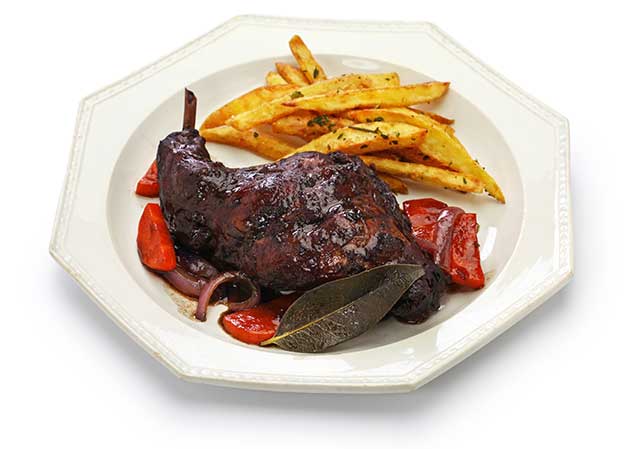
Although the idea of rabbit as food can seem strange, it is a common type of meat in some parts of Europe and the United States (and China).
Rabbit is very popular in France where it is considered to be a delicacy.
Nutrition Facts
Rabbit meat is surprisingly nutrient-dense, and it offers the following nutrition profile per 100 grams (37);
| Nutrient | Amount |
| Calories | 136 kcal |
| Carbohydrate | 0 g |
| Protein | 20.0 g |
| Fat | 5.5 g |
| – Saturated | 1.7 g |
| – Monounsaturated | 1.5 g |
| – Polyunsaturated | 1.1 g |
| – Omega-3 | 220 mg |
| – Omega-6 | 860 mg |
| Omega 6 to 3 Ratio | 3.9 : 1 |
| Vitamin A | 0% DV |
| Vitamin C | 0% DV |
| Vitamin D | – |
| Vitamin E | – |
| Vitamin K | – |
| Thiamin | 7% DV |
| Riboflavin | 9% DV |
| Niacin | 36% DV |
| Vitamin B6 | 25% DV |
| Folate | 2% DV |
| Vitamin B12 | 119% DV |
| Pantothenic Acid | 8% DV |
| Calcium | 1% DV |
| Iron | 9% DV |
| Magnesium | 5% DV |
| Phosphorus | 21% DV |
| Potassium | 9% DV |
| Sodium | 2% DV |
| Zinc | 7% DV |
| Copper | 7% DV |
| Manganese | 1% DV |
| Selenium | 34% DV |
Benefits
- Rabbit is a substantial source of vitamin B12 and it is also very high in selenium.
- Although it is not as high in protein as some kinds of meat, rabbit is very low in fat and calories. As a result, it is very protein-dense; 20 grams of protein per 136 calories.
- Rabbit offers one of the better omega-6 to 3 ratios among meat.
Concerns
- Wild rabbits are occasionally infected with a pathogen known as tularemia. It is possible for undercooked rabbit meat to transmit this infection (38).
12. Pheasant
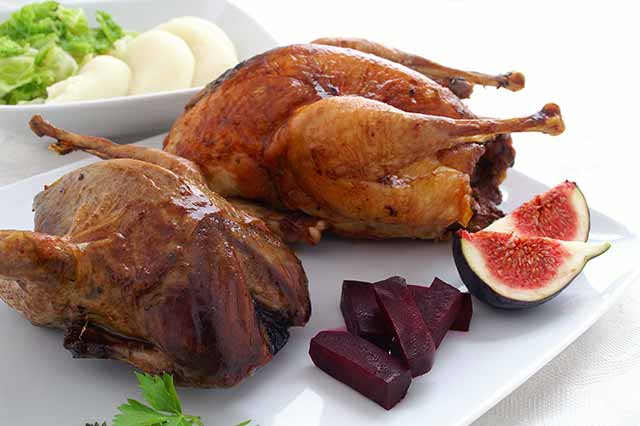
Pheasant is thought to be a 'premium' meat product thanks to its flavorful taste, and the meat is popular across Europe and the United States.
Nutrition Facts
Pheasant offers an impressive nutrition profile, and it contains the following nutrients per 100 grams (39);
| Nutrient | Amount |
| Calories | 181 kcal |
| Carbohydrate | 0 g |
| Protein | 22.7 g |
| Fat | 9.3 g |
| – Saturated | 2.7 g |
| – Monounsaturated | 4.3 g |
| – Polyunsaturated | 1.2 g |
| – Omega-3 | 100 mg |
| – Omega-6 | 810 mg |
| Omega 6 to 3 Ratio | 8 : 1 |
| Vitamin A | 4% DV |
| Vitamin C | 0% DV |
| Vitamin D | – |
| Vitamin E | – |
| Vitamin K | – |
| Thiamin | 5% DV |
| Riboflavin | 8% DV |
| Niacin | 32% DV |
| Vitamin B6 | 33% DV |
| Folate | 1% DV |
| Vitamin B12 | 13% DV |
| Pantothenic Acid | 9% DV |
| Calcium | 1% DV |
| Iron | 6% DV |
| Magnesium | 5% DV |
| Phosphorus | 21% DV |
| Potassium | 7% DV |
| Sodium | 2% DV |
| Zinc | 6% DV |
| Copper | 3% DV |
| Manganese | 1% DV |
| Selenium | 22% DV |
Benefits
- Pheasant is an excellent source of B vitamins, and it is particularly high in these nutritions compared to other varieties of poultry.
- Pheasant need space and they are usually wild or from 'free range' farms where they have access to pasture.
Concerns
- There are no specific concerns about pheasant meat. However, like all poultry, it should be cooked fully to minimize the risk of food poisoning.
Omega-6 to Omega-3 Ratio By Variety of Meat
One of the biggest 'health trends' over the past decade is the focus on naturally raised, grass-fed beef and pastured animal products.
Animal welfare is one of the often mentioned reasons for this. However, many people have also taken an interest in the better 6 to 3 ratio of the meat.
The main reason for this seems to be because most of us are consuming excessive amounts of omega-6 in recent times.
For example, the traditional human diet was believed to have a ratio of close to 1:1 omega-6 to omega-3. However, modern-day estimates place this ratio up to a high of 25:1 (40).
For easy reference, here are the approximate omega-6 to 3 ratios for the meats in this article;
| Type of Meat | Omega-6 to Omega-3 Ratio |
| Beef | 9 : 1 |
| Chicken | 13.8 : 1 |
| Duck | 8.4 : 1 |
| Lamb and Mutton | 3.2 : 1 |
| Pork | 23.8 : 1 |
| Turkey | 16.3 : 1 |
| Venison | 2 : 1 |
| Wild Boar | 16.7 : 1 |
| Bison | 6.9 : 1 |
| Goose | 8 : 1 |
| Rabbit | 3.9 : 1 |
| Pheasant | 8 : 1 |
Please note: to ensure balance, this data is for conventional meats, and you can expect a better ratio for fully grass-fed meat.
The fatty acid ratios of meat will also vary depending on what producers feed the animals.
Which Type of Meat is Healthiest?

To be honest, there is no single meat that is outright 'healthier' than another.
There are a variety of factors to consider which include the nutrient profile, taste, and affordability.
However, it is often a good idea to mix and match food choices, which can help to attain a greater range of nutrients.
Organ Meat
Organ meats are among the most nutrient-dense of all foods.
Although they are not as popular as they once were, foods like beef liver and kidneys are full of essential nutrients.
See this guide to organ meats for further information.
Cured Meat
While cured meats do not have as good a health reputation as fresh meat, the purported concerns are often overplayed.
This guide to cured meats discusses the most popular options.
Dried Meat Products
There are also a variety of dried meat products available, which tend to vary in their quality.
Some of the most popular options include beef jerky and biltong.
Source: https://www.nutritionadvance.com/types-of-meat/
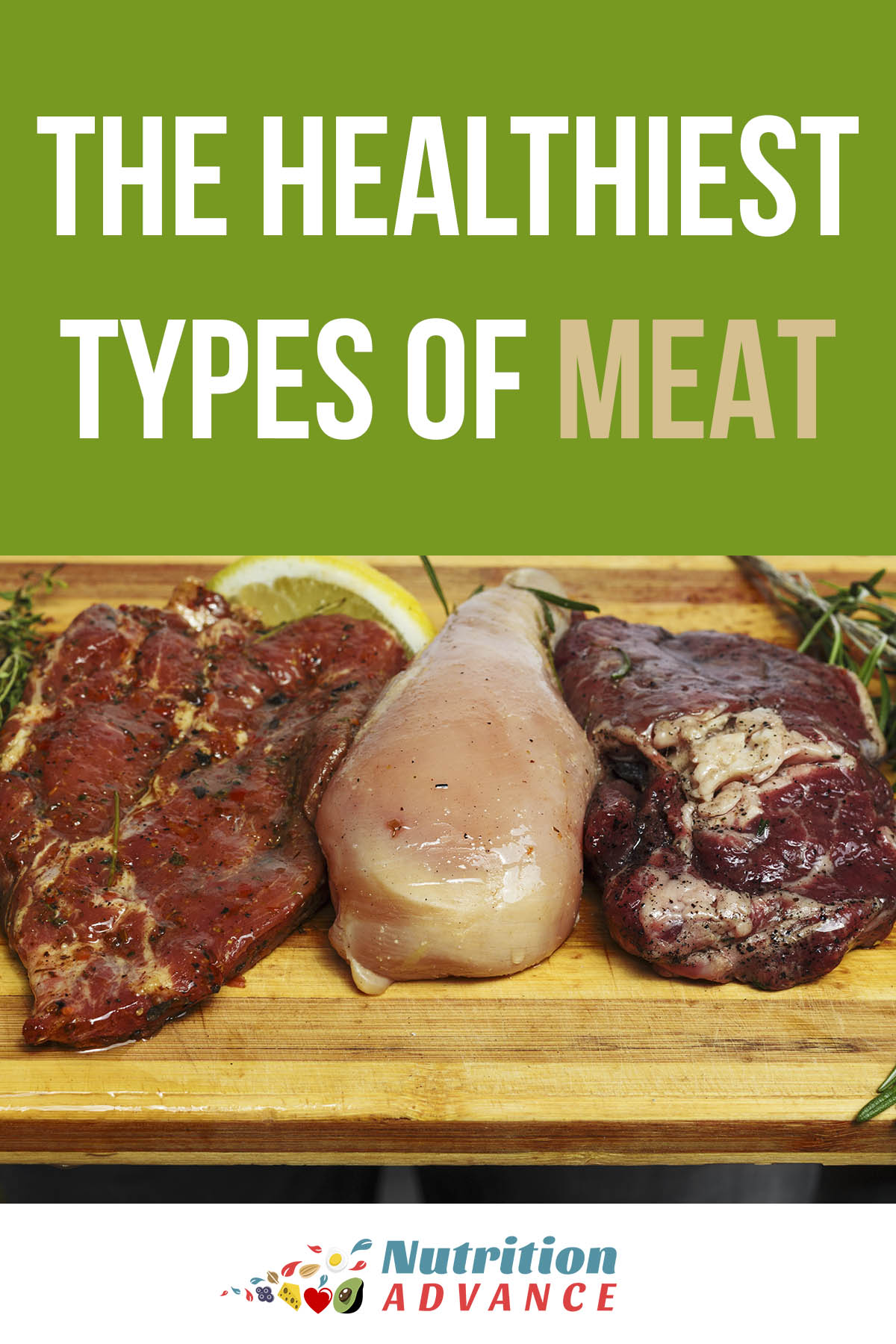
Post a Comment for "Pork Beef Chicken or Bison Liver Nutritional Comparisons"